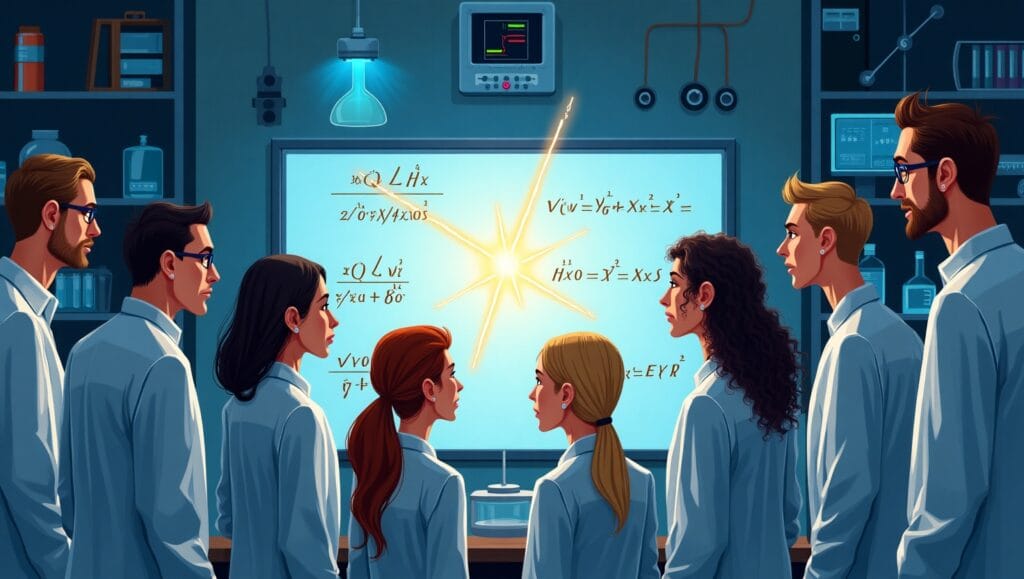For more than a century, two of the greatest minds in physics — Albert Einstein and Niels Bohr — stood on opposite sides of one of science’s most mysterious debates: Is light a wave, a particle, or somehow both? Now, researchers at the Massachusetts Institute of Technology (MIT) Scientists may have finally settled this age-old question using groundbreaking quantum experiments that provide strong evidence toward resolving the light’s quantum debate on light duality.
A Century-Old Puzzle
The origins of the debate date back to the early 20th century. Einstein proposed that light behaves as particles (photons) when explaining the photoelectric effect, a discovery that earned him the Nobel Prize. Meanwhile, Bohr, a staunch defender of quantum mechanics, insisted that light also displays wave-like behavior, especially when observed through interference patterns.
The clash between these two titans was not just academic — it highlighted fundamental questions about how reality itself works. Can light be both a wave and a particle at the same time? Or does its behavior depend entirely on how we measure it?
MIT Scientists Groundbreaking Experiment
Fast forward to 2025, and a team of quantum physicists at MIT have devised a new form of quantum measurement that offers clarity. Using advanced photonic entanglement techniques and weak measurement methods, they demonstrated that light doesn’t just switch between wave and particle — it possesses both properties simultaneously, regardless of how it’s observed.
According to Dr. Elena Rodriguez, lead scientist on the project:
“We were able to trace the quantum state of individual photons in real time, without disturbing their behavior. What we saw confirms that light’s wave and particle nature are not mutually exclusive — they are deeply entwined parts of the same reality.”
This experiment used entangled photons created through a process known as spontaneous parametric down-conversion. By analyzing these photons with ultra-sensitive detectors, researchers collected precise data that previously eluded scientists due to the Heisenberg uncertainty principle.

What This Means for Physics
This discovery not only provides strong experimental support for Bohr’s interpretation of quantum mechanics, but also reframes Einstein’s insights in a modern context. Essentially, both physicists were correct — but incomplete in their understanding.
The MIT Scientists team’s findings validate one of the core principles of quantum debate superposition: a quantum object like a photon doesn’t choose between being a particle or a wave. Instead, it exists in a hybrid quantum state until measured, and even then, that measurement doesn’t “collapse” the dual nature — it only reveals one side of it at a time.
In practical terms, this might sound esoteric, but it has huge implications for quantum technologies. From quantum computing to secure quantum communication, understanding the true nature of light helps improve how we build and manipulate next-gen technologies.
Reactions from the Scientific Community
The physics world is buzzing with excitement. Noted quantum theorist Dr. Anil Gupta of the University of Cambridge said:
“This is not just about closing an old chapter. It’s about opening a new one in our understanding of quantum debate reality.”
Meanwhile, popular science figures have taken to social media to celebrate what they’re calling a “milestone moment in quantum physics.”
A Final Word: Why It Matters
Why should this matter to anyone who’s not a physicist? Because it’s another step toward understanding the fundamental rules that govern our universe. And more practically, such discoveries lead to better sensors, faster computers, and more secure digital communication systems.
MIT’s success in resolving the Einstein-Bohr debate isn’t just a scientific victory. It’s a powerful reminder of how far we’ve come in understanding the very fabric of reality — and how much more there is yet to learn.






